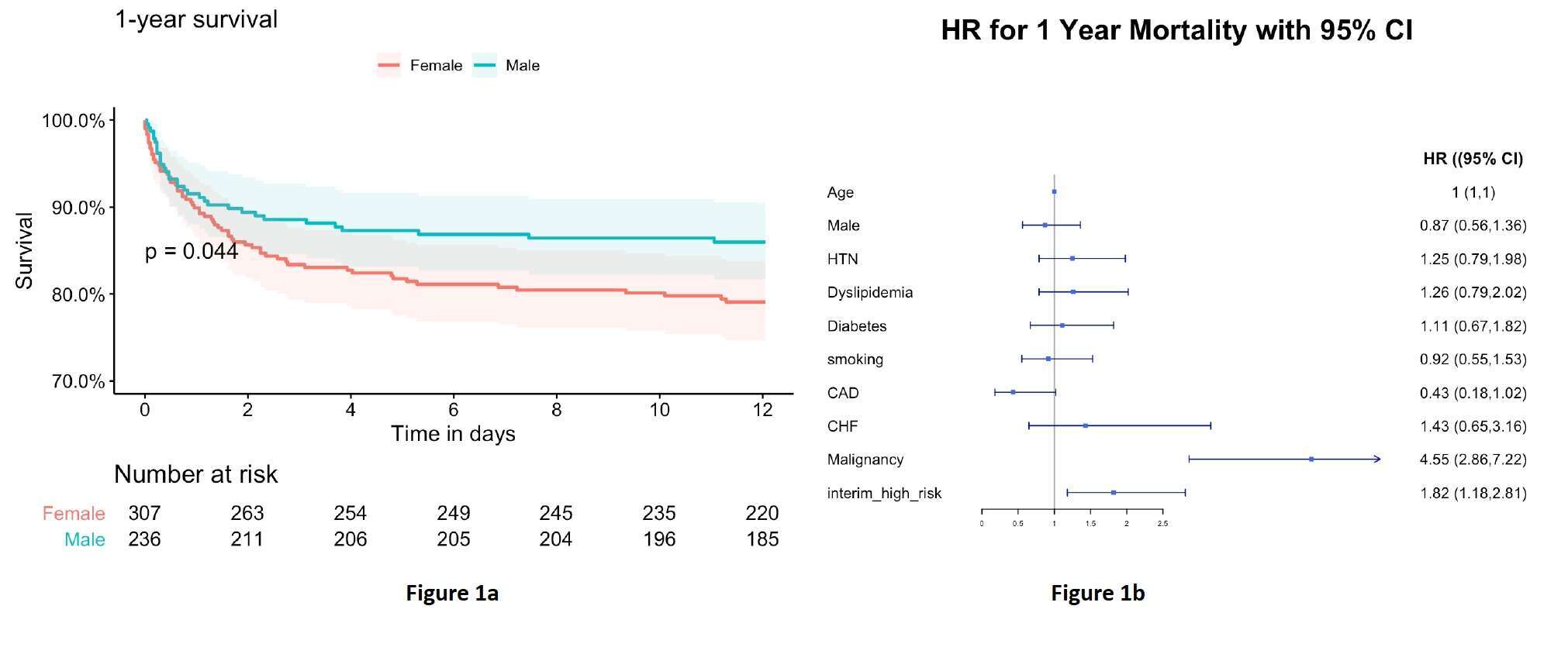
Sex -Specific Differences in Pulmonary Embolism – on behalf of PERT Registry
2The Sackler Faculty of Medicine, Tel Aviv University, Israel
3Internal Medicine, Chaim Sheba Medical Center, Tel-Hashomer, Israel
Background : Sex differences regarding risk factors, symptoms and outcome have been reported mostly for coronary artery disease (CAD). Limited data exist for sex differences in pulmonary embolism (PE).
Methods : We prospectively collected clinical, imaging, laboratory and outcome data from patients hospitalized for PE in our center from 2016 to 2019.
Results : Of 546 patients 309 (56.6%) were women. No age difference was seen among women and men hospitalized for PE (73.85±? vs 67.64±? p= 0.43). Men were more likely to smoke (14.9% vs 27.7, p <0.001) or have CAD (5.3% vs 19.1% p <0.001). No differences in risk factors for PE such as thrombophilia ( 6.5%vs 5.9%, p=0.913), recent trauma (13.2%vs 15.1%, p=0.913), immobilization (32.5% vs 28.1%, p=0.318), surgery (21.6% vs 22.6, p=0.866) or prior PE (9.8% vs 7.3%, p=0.385) were seen in women vs men, respectively.
Women and men had similar presenting symptoms, with chest pain being the most frequent symptoms (26.2% vs 25.7%, p=0.974). A majority of women and men presented with intermediate-low risk PE (68.7% vs 67.4%, p=0.854).
There were no sex differences in therapy including heparin use (29% vs 28%, p=0.904), thrombolysis (4.1% vs 3.1% , p=0.781), surgery (1.4% vs 3.7%, p=0.270) or catheter therapy (0.9% vs 0.6%, p=0.99) in women vs men , as well as in major (6.6% vs 3.1%, p=0.098) or minor (3.7% vs 4.8%. p=0.653) bleeding during hospital stay.
Women and men had similar 3 months mortality (9.8% vs 9.6%, p =NS), but significantly higher 1 year mortality was seen in women (figure 1a) .
Main predictors of 1 year mortality were malignancy and intermediate-high risk PE (figure 1b).
Conclusions : One year mortality rates were higher in women as compared to men with PE, despite similar risk factors, therapy, severity of PE and 3 months mortality.

Powered by Eventact EMS